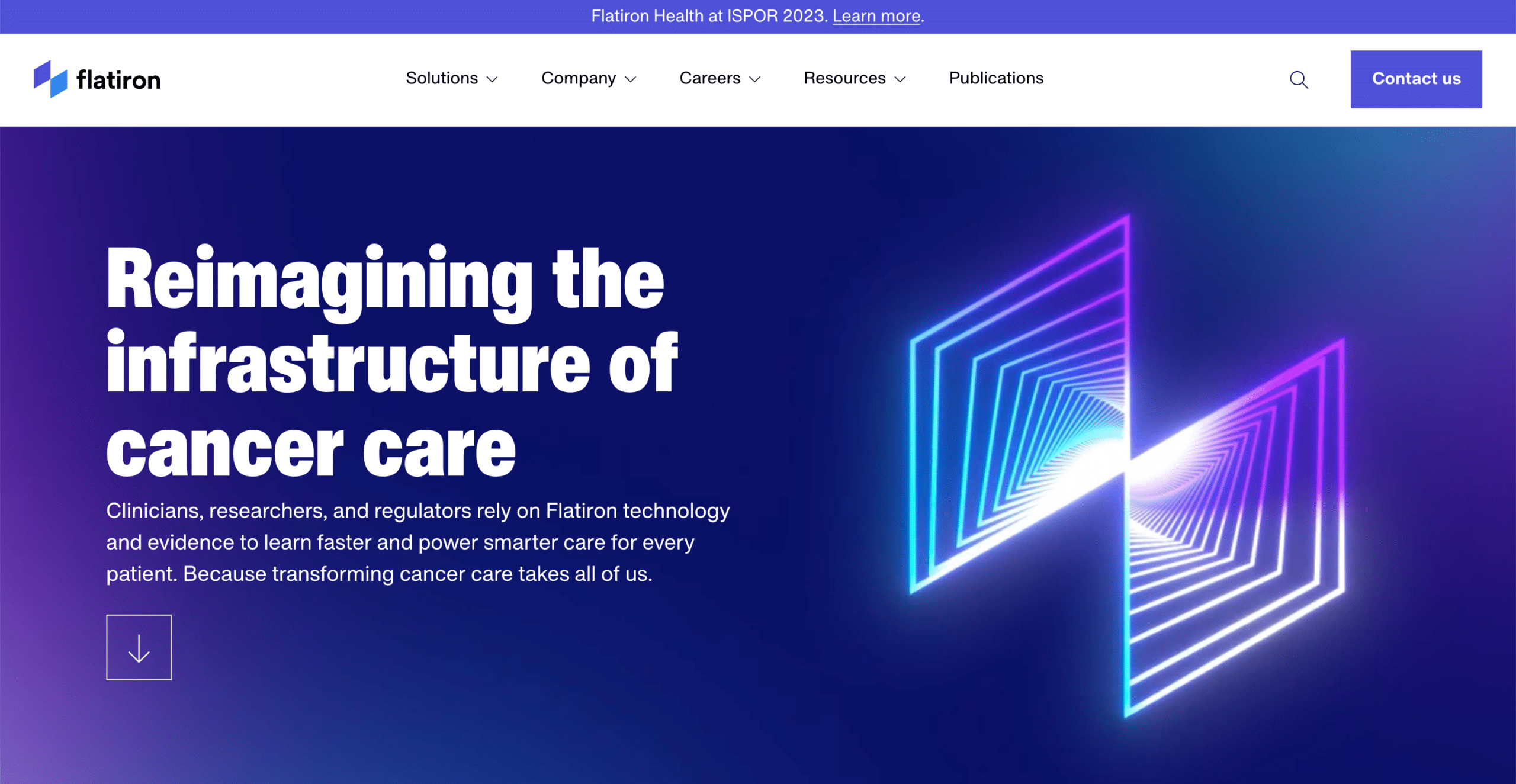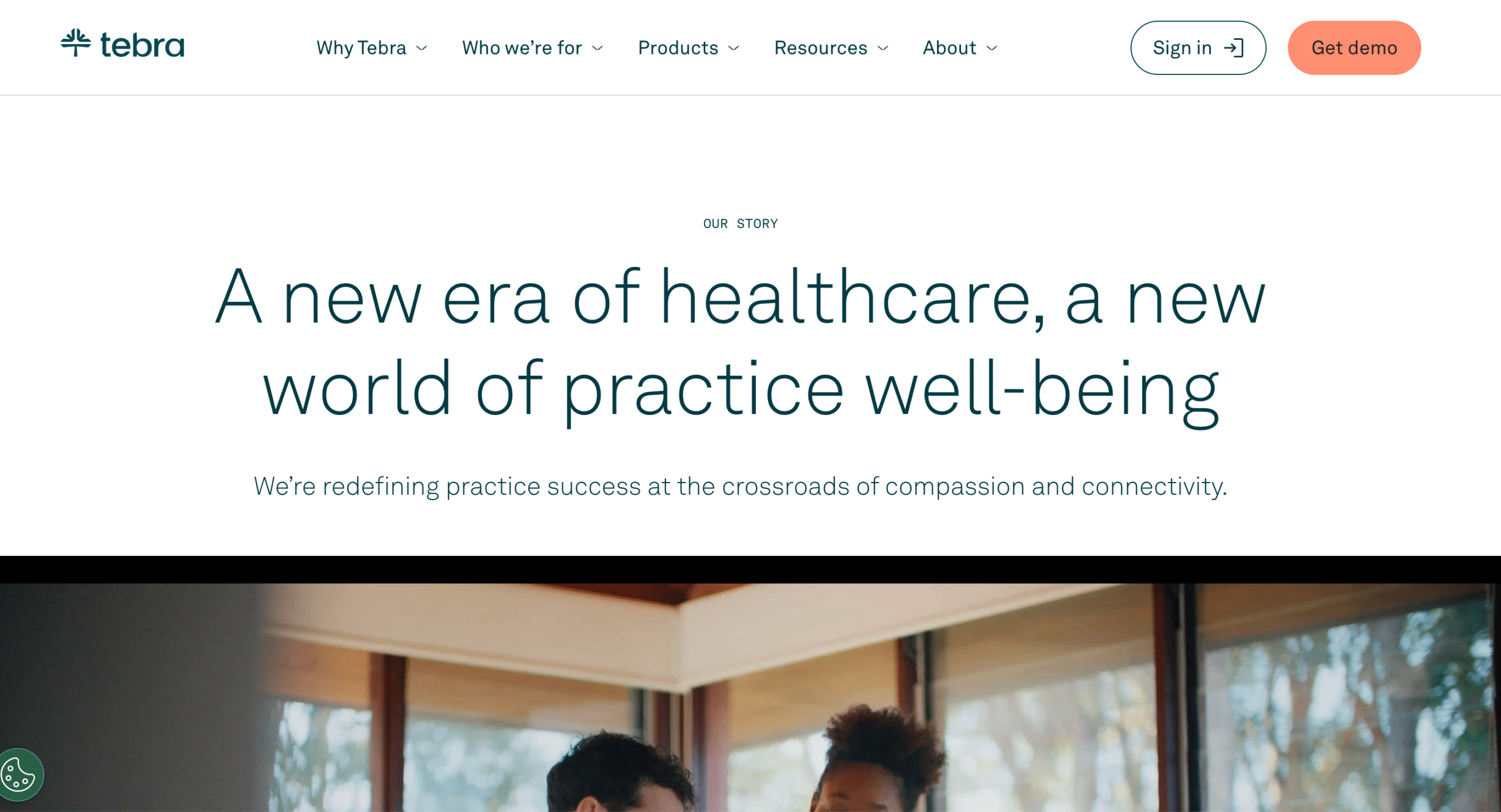Web design has come a long way in recent years. This has resulted in the need for better and more user-friendly web designs, especially in the health tech software industry. Web design for health tech software is essential because it can help improve user experience, enhance website performance, and boost engagement.
In this article, we will discuss the top web design best practices that you should consider when designing your website for your healthcare SaaS product.
Keep Your Web Design Simple
The first key element is to keep it simple. Simplicity is key when it comes to web design, especially in the healthcare industry. Your website should be easy to navigate, and users should be able to find what they are looking for quickly. The website should be clutter-free, and the content should be concise and easy to understand. This will help users to focus on the important information and will ensure that they stay engaged with the website.
Your SaaS product and website should exemplify the fact that your company simplifies the operations of medical organizations and improves patient outcomes. After all, that’s the main objective of healthcare facilities. You don’t want to overcomplicate their healthcare technology, you want to make it easier than ever so that they can focus on patient care.
The easiest way to make your website straightforward and simple is to focus on the why behind your software solutions. Why should healthcare providers implement your solution into their daily operations? How are you solving pain points for them? These questions should be the top priority that you need to answer on your website. PatientPop shares some insights on what makes a strong health tech product and it’s great information to keep in mind when you’re thinking about your web design approach as well:
Create Informative & Digestible Content
Especially when you’re working in the medical industry, technical jargon can get overwhelming and hard to digest for your potential customers. This also depends on what your health tech software is specialized for. Do you cater to healthcare providers or potential patients?
Technical jargon can be a barrier for many potential customers, especially in the health tech software industry. It’s important for you to be informative and digestible in your web design and communication to ensure that your target audience understands the information being presented. This means using language that is accessible and easily understood by the target audience while avoiding confusing or overly technical terms.
For example, if a health tech company provides software for healthcare providers, they may use technical terms such as Electronic Health Records (EHRs), Interoperability, and Health Information Exchange (HIE) to describe their software capabilities. While these terms are common within the medical industry, they may be unfamiliar to potential customers who are not healthcare providers. In this case, it’s important to provide clear definitions of these terms and explain how they relate to the software being offered.
On the other hand, if a health tech company provides software for patients, they may use terminology such as Telemedicine, Remote Monitoring, and Health Tracking to describe their software capabilities. These terms are more easily understood by patients and do not require as much technical knowledge. However, it’s still important to provide clear explanations of how the software works and how it can benefit the patient’s health.
Here are some technical terms that health tech software companies may use:
Electronic Health Records (EHRs)
Electronic health records (EHRs) are digital versions of a patient’s medical record. EHRs contain information such as medical history, allergies, medication lists, test results, and more. They are designed to improve the quality of patient care by providing healthcare providers with immediate access to up-to-date and accurate patient information. EHRs also support clinical decision-making by providing access to evidence-based guidelines and decision-support tools that can help healthcare providers identify potential risks and improve the accuracy and efficiency of diagnoses and treatment plans.
Interoperability
Interoperability in healthcare refers to the ability of different health information technology (HIT) systems to exchange and use data seamlessly and effectively, without any barriers or limitations. In other words, interoperability enables different systems to communicate and share data in a way that is useful and meaningful to all parties involved. Interoperability is essential for achieving a connected and coordinated healthcare system, where patients and providers can access and share information easily and securely.
Health Information Exchange (HIE)
Health information exchange (HIE) is a process that allows healthcare providers and organizations to share patient health information electronically and securely. HIE enables the exchange of patient health information between different healthcare providers, such as hospitals, clinics, and physicians, and allows them to access and share information about a patient’s medical history, medications, allergies, and other vital health information.
Telemedicine
Telemedicine refers to the use of technology to provide remote medical services, such as virtual doctor visits. This is a rapidly growing field of healthcare that allows patients to receive medical care remotely using various forms of technology, such as video conferencing, messaging, and other communication tools. It enables healthcare providers to connect with patients in real time, regardless of their location, and provide diagnosis, treatment, and ongoing care.
Remote Monitoring
Remote monitoring, also known as remote patient monitoring (RPM), is a healthcare practice that uses technology to monitor patients’ health status remotely, without the need for face-to-face interaction between patients and healthcare providers. This involves the use of devices, such as wearable sensors and mobile health apps, to collect and transmit patient health data to healthcare providers for analysis and interpretation.
Clinical documentation improvement (CDI)
The goal of CDI is to ensure that clinical documentation accurately reflects the severity of a patient’s illness and the level of care provided, which can improve patient outcomes, increase reimbursement for healthcare providers, and reduce the risk of legal and compliance issues.
Clinical Information System (CIS)
This is a type of healthcare information system that is designed to support and enhance the clinical workflows and processes of healthcare providers, such as physicians, nurses, and other care team members. A CIS typically includes a variety of software applications and tools that are used to manage and document patient care, such as electronic health records (EHRs), computerized physician order entry (CPOE) systems, clinical decision support (CDS) tools, and medication administration systems.
ICD Coding
ICD coding stands for International Classification of Diseases Coding. It’s a standardized system used to classify and code diseases and health conditions for the purposes of tracking, reporting, and billing healthcare services.
Practice Management System (PMS)
This is a type of healthcare information system that is designed to support the administrative workflows and processes of healthcare providers, such as medical practices, clinics, and hospitals. A PMS typically includes a variety of software applications and tools that are used to manage the day-to-day operations of a healthcare practice, such as patient scheduling, billing and invoicing, claims processing, and electronic health records (EHRs).
Health Information Service Provider (HISP)
A HISP is a type of healthcare information technology service that facilitates the secure exchange of health information between healthcare providers and patients. HISPs typically provide secure email and messaging services that allow healthcare providers to communicate with patients and other providers in a way that meets regulatory requirements for privacy and security.
Patient Lifecycle Management
Patient lifecycle management is a strategic approach to managing a patient’s entire journey through the healthcare system, from the time they first seek care to their ongoing management and follow-up. It is a comprehensive approach to patient care that emphasizes the importance of coordinated and continuous care and aims to improve patient outcomes, reduce costs, and enhance the patient experience.
These are just a handful of health tech terminology which are used frequently by experts in this industry. There are many more but you want to make sure there is a balance when utilizing this verbiage. You don’t want to go overboard on these terms and potentially overwhelm your audience when they visit your website. Make sure you’re informative at the level where it makes sense for the people you are intending to sell to.
Mobile Optimization
The second web design best practice is mobile optimization. In today’s world, the majority of people use their mobile devices to access the internet. This means that websites must be optimized for mobile devices. Health tech software companies should ensure that their websites are responsive and that they work well on all mobile devices. This simply means that your site will adjust to the screen size of the device being used and ensure that users can navigate the website easily.
You want the user interface to be seamless no matter what device someone is visiting your website on. Health tech is a competitive industry, and you don’t want a visitor to leave your site just because they are struggling to view it on their device.
Website Speed & Performance
The third web design best practice is speed and performance. Website speed is crucial for user experience, and it is a key factor that affects website engagement. Health tech software companies should ensure that their websites are optimized for speed and performance. This can be achieved by optimizing images, using caching, and reducing the number of HTTP requests. A fast-loading website will improve user experience, increase engagement, and reduce bounce rates.
You want to try and refrain from utilizing too many plugins or additional software for your website. This puts your load speed at risk and as a result, you can lose potential customers. Keep in mind that a 0-4 second website load time is best for conversion rates.
Accessibility
Health tech software companies should ensure that their websites are accessible to everyone, including people with disabilities. This means that websites should be designed with accessibility in mind, including features such as alt tags for images, keyboard navigation, and the ability to increase font sizes. Accessibility is also essential for SEO, as search engines rank accessible websites higher.
You want to ensure that your website is accessible and can easily be found on search engines for healthcare providers that will benefit the most from your SaaS product. Many healthcare organizations are on the hunt for new solutions that can streamline their processes and enhance the patient experience, and you want to be one of the first options in their Google search.
Consistency
Consistency is key when it comes to website design and health tech software companies should ensure that their websites are consistent in terms of design, layout, and content. This will help users to navigate the website more easily and will ensure that they stay engaged with the website. Consistency also helps to establish brand identity and creates a more professional look and feel for the website.
Make sure you keep your design to the same color scheme, fonts, graphics, etc. that your brand embodies. For example, this health tech company, Flatiron, keeps consistent colors for their brand and their website is clean and very easy to navigate:

Visual Hierarchy
Visual hierarchy is the arrangement of elements on a webpage in order of importance. Health tech software companies should use a visual hierarchy to guide users through the website and highlight the most important content. This can be achieved by using larger fonts for headlines, using color to draw attention to important elements, and using whitespace to separate content and make it easier to read.
A great example of this is Tebra, an all-in-one health tech solution for healthcare facilities. Their website is very clean with neutral colors and visuals that entice you to scroll further down their homepage:

Include Testimonials & Case Studies
One thing you need when your software is dedicated to the healthcare market is social proof and referrals. Whether this is through positive patient testimonials or a healthcare facility that utilizes your software participates in a case study about your product, this is vital for your business growth.
Healthcare professionals want to have a seamless operation, and if you give them a stress-free experience with your software solution, they are likely to leave a positive review or recommend you to other businesses. Along with this, if you interact with these businesses and maintain a strong online presence, you’ll be able to make strong connections within your target industry and expand your reach even further.
Provide Personalization
For the healthcare sector, personalization is a high priority. Patients are expecting more personalized experiences with their healthcare services as 80% say the experience a company provides is just as important as its products and services.
If there’s an opportunity to make your product or interaction with your customers more personalized, you need to take advantage of it. Personalization makes patients feel cared about and seen, so your company will make a positive impact on them if you have efficient communication that is tailored toward your audience.
If your product helps healthcare brands enhance their personalization efforts, that’s an even bigger plus. In this industry specifically, organizations are in need of solutions that help them with their patient’s needs and wants.
Include Strong Call-to-Actions (CTAs)
The seventh web design best practice is call-to-action (CTA). A call-to-action is a button or link that prompts users to take a specific action, such as signing up for a newsletter or downloading an app. Health tech software companies should ensure that their website has clear and prominent CTAs that are easy to find and that clearly state the action that users should take.
CTAs should be placed in strategic locations, such as the top of the page or at the end of a blog post. Think of them as a guide for your visitors to take the next step to get more invested in what your company offers. You don’t want an important page to be left without a CTA and the potential customer is left to their own devices and decides to explore what other options they have at their disposal.
Key Takeaways
As you can see, there are a lot of components to executing a strong healthcare website design strategy for your SaaS product. But, these tactics are essential for growing your brand and business. Medical websites can get complicated, but as long as you remember to keep your concept simple and straightforward, you can avoid confusion for your visitors and create a positive digital experience. Maintaining an online presence is crucial, and when done correctly, you’ll reap the benefits of consistently interacting with your target healthcare audience.

Health tech marketing is a vital component of ensuring that you effectively reach your target audience. Your website is at the core of this, so it’s important that you have a strong interface to showcase your product and services. A marketing strategy for the healthcare industry should simplify concepts and make your product enticing for organizations to adopt for their everyday operations and duties.
